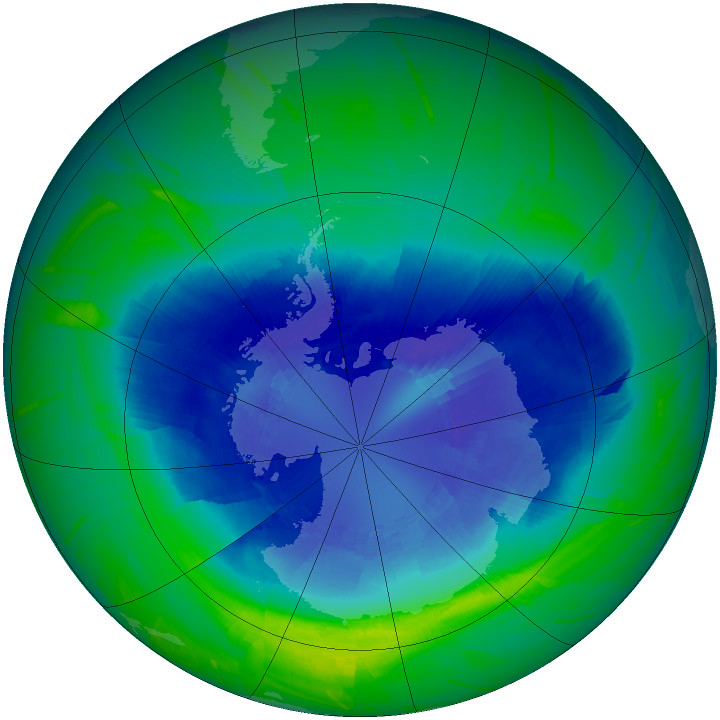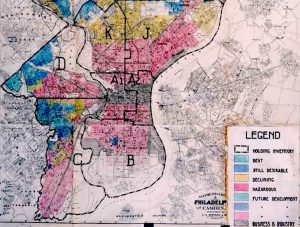3 Environmental Ethics
Learning Objectives
After studying this chapter, you should be able to:
- Describe the views of influential environmental ethicists
- Define the major ethical theories and attitudes towards the environment
- Give examples of the four levels of ethical responsibility
- Explain why the Tragedy of the Commons occurs
- Explain the utilitarian view of animal welfare
- Describe the environmental justice movement and the problems it is trying to solve
Approaches to Environmental Ethics
Although you may not realize it, you make environmentally impactful decisions every day. Should I drive to work or take the bus? Should I eat fried chicken or a veggie burger? Should I buy this soda that’s made by a company that pollutes the ocean? How you answer these questions depends on many factors, such as your own personal worldview, socioeconomic status, and educational level. But if you’re like most people, you make these decisions on “auto-pilot” without any deeper reflection on their impacts and importance. Environmental ethics is an attempt to provide a more rigorous framework for our ethical decision-making on environmental issues.
Ethics is a branch of philosophy that explores and defines what behaviors we consider to be right or wrong. Environmental ethics is the area of ethics that addresses the ethical relationship between humans and the non-human environment, including other species and the land itself. The main focus of environmental ethics is defining what responsibility humans have to the environment, and how far this responsibility extends. Our responsibility to other humans, other species, and the land is determined by how we assign value to these items. Something is considered to have instrumental value if it its value comes from its usefulness to humans. For example, paper money has instrumental value because it can be exchanged for goods and services, but the paper itself is essentially worthless. On the other hand, something that possesses intrinsic value is valuable in and of itself, regardless of how useful it is. For example, most people consider other humans to have intrinsic value because they possess that value whether or not they are “useful” to others. There are three general theories regarding human responsibility to the environment, each with its own approach to assigning value to the environment.
An anthropocentric, or human-centered, approach to environmental ethics is the view that human interests are the most important elements to consider in any given situation. Human beings are the only morally significant organisms, and all other species only possess instrumental value. We do not have a duty to protect other species for their own sake.
Early European settlers in North America had a completely anthropocentric attitude towards the land. After depleting the resources in one area, they moved westward to new frontiers, assuming that the earth has an unlimited supply of resources. This attitude survives today among many who view humans as masters whose responsibility is to manage the planet for maximum profit. However, not all anthropocentric proponents believe in unlimited resource use. Some argue that since the environment is crucial to human survival, we still have a duty to protect the environment to support current and future generations of humans.
A second approach to environmental ethics is called the biocentric, or life-centered, theory. Under this theory, all forms of life have intrinsic value, and therefore have a right to exist. While some proponents of this view claim all living things—from bacteria to whales—have equal value, most people assign different levels of value to different types of organisms. For example, some might say animals have greater value than plants, or more intelligent animals have greater value than less intelligent animals. Animal rights activists tend to have a biocentric view because they believe individual animals possess intrinsic value and should not be mistreated or killed by humans to satisfy our own needs and wants.
The third approach is called the ecocentric, or environment-centered, theory of environmental ethics. Under this theory, the environment as a whole possesses intrinsic value and humans have a duty to protect the environment regardless of its usefulness to us. We must therefore consider how our actions will impact all parts of the ecosystem, including animals, plants, and even the water and the soil. This view considers humans to be a part of nature, not somehow separate or more valuable than other components of the environment. However, an ecocentric proponent would still assign value to other species depending on their role in the environment. For example, they might consider a species of plant that is native to an area more valuable than a plant from another ecosystem. Or endangered animal might have more value than a more common type of animal because the death of an endangered animal will have a more negative impact on the environment as a whole.
Traditional Native American religions tend to have an ecocentric approach to the environment, in which humans are seen not as isolated entities, but are part of larger communities, which include the seas, rivers, mountains, trees, fish, animals and ancestral spirits. From the point of view of many indigenous people, sustainable development is a process that must integrate spiritual, cultural, economic, social, political, territorial, and philosophical ideals.

The ecocentric view was famously advocated by the American ecologist and writer Aldo Leopold (Figure 1). Leopold worked for the U.S. Forest Service in the early 1900s and was assigned to kill bears, wolves, and other predators that threatened the cattle and sheep owned by ranchers in the West. Over time, Leopold came to realize that humans were upsetting the delicate balance of nature by killing off predators. Instead, he came to believe that the government has a duty to preserve wild animals and their habitats. He expressed this idea, known as the land ethic, in his 1949 book A Sand County Almanac:
“The land ethic simply enlarges the boundaries of the community to include soils, waters, plants, and animals, or collectively: the land. In short, a land ethic changes the role of Homo sapiens from conqueror of the land-community to plain member and citizen of it.”
While this view may not seem radical today, it was a major break from the typical anthropocentric view of most Americans at the time, and Leopold’s work was an inspiration for the environmental movement that began in the 1960s and ’70s.
Knowledge Check
Levels of Environmental Responsibility
If humans are going to solve the environmental problems we face, we must be willing to take specific actions to address these problems. These actions can be taken at a variety of levels, from the individual to the global. There are four levels of environmental responsibility, distinguished by who is responsible for making decisions that harm or help the environment.
On an individual level, we all make decisions that affect the environment, and many people have changed their behavior in an effort to be more eco-friendly. Whenever a person decides to recycle a plastic bottle or take a bus instead of driving, he or she is making a decision at the individual level of responsibility. The actions of many individuals taken together can have a profound impact on the planet, but the greatest changes are likely to come from the higher levels of responsibility because they affect the behaviors of large numbers of people all at once.
The societal level of responsibility encompasses the collective actions taken by a large group of people. For example, a city government may decide to implement a recycling program or an environmental activist group may hold large protests to try to force a change in climate policies.

The corporate level of responsibility describes actions taken by companies to be more sustainable. For example, an employer might give out free bus passes to its employees to discourage use of personal vehicles. There are many actions that might be taken to reduce a company’s ecological footprint, but consumers must be wary of greenwashing, which is misinformation disseminated by an organization to present an environmentally responsible public image. The Starbucks company has been accused of greenwashing for its introduction of straw-free lids because the lids actually use more plastic than the old straw and lid combination. Consumers must also be wary of greenwashing on product labels such as “all natural” and “eco-friendly,” as many of these terms have no precise definition and are simply used to attract eco-conscious customers (Figure 2).
The highest level of environmental responsibility is the global level. Many environmental problems, such as climate change, are global in scale, and so must be solved by multiple countries working together. Given that there is a wide diversity of government structures and cultures around the world, it can be especially challenging to make changes at the global level. One example of a successful global environmental agreement is the Montreal Protocol, which banned the production of ozone-depleting chemicals known as chlorofluorocarbons (CFCs). This treaty was ratified by 197 countries in 1987, and the hole in the ozone layer has been shrinking ever since (Figure 3).

Knowledge Check
The Tragedy of the Commons
In his 1968 essay, “The Tragedy of the Commons,” ecologist Garrett Hardin looked at what happens when humans do not limit their actions by including the land as part of their ethic. The tragedy of the commons develops in the following way: Imagine a small town containing a cow pasture that is open to all families to freely use as they choose. This pasture is known as an open-access resource because it is owned by no one and can be used by anyone. It is to be expected that each family will try to keep as many cattle as possible on the commons. As rational beings, each family seeks to maximize their gain. Adding more cattle increases their profit, and they do not suffer any immediate negative consequence because the commons are shared by all. It is reasonable to conclude that the only sensible course is to add another animal to the herd, and then another, and so forth. However, this same conclusion is reached by each and every family sharing the commons. Therein lies the tragedy: each family is locked into a system that compels them to increase their herd, without limit, in a world that is limited. Eventually this leads to environmental and economic collapse due to overgrazing of the pasture (Figure 4). In a society that believes in the freedom of the commons, freedom brings ruin to all because each person acts selfishly.

Hardin went on to apply the situation to modern examples of open-access resources: overgrazing of public lands, overuse of public forests and parks, depletion of fish populations in the ocean, use of rivers as a common dumping ground for sewage, and fouling the air with pollution. Hardin’s concern for the environment led him to advocate for coercive population control and an end to economic aid for developing countries. However, these views are not supported by most environmental ethicists today, as human rights and human well-being are seen as integral components of environmental sustainability.
The problems brought on by the Tragedy of the Commons have led many environmental thinkers to conclude that environmental degradation can only be halted if resources are owned by either private citizens or governments, and that all open-access resources will ultimately be destroyed. However, this view has been challenged in recent years by a Nobel Prize-winning economist named Elinor Ostrom. Her studies of communities around the world have shown that people are often capable of managing their own open access resources as long as the people using the resources are responsible for the decisions about how to use them. For example, villagers are unlikely to deplete all the fish in a lake they depend on for food. But a large corporation is more likely to over-fish the lake if it can simply move on to another lake when the fish are gone.
Rachel Carson and Silent Spring
Rachel Carson is an example of a scientist who put environmental ethics into action. She was a marine biologist who worked for the U.S. Fish and Wildlife Service in the 1940s and ’50s, a time when it was rare for women to hold such a position (Figure 5). Her research into declining bird populations revealed that a commonly used pesticide called DDT was accumulating in the bodies of birds of prey, causing the shells of their eggs to weaken. Carson wrote a best-selling book titled Silent Spring in 1962 to alert the world to this tragedy. Her work led to the eventual banning of DDT in the United States and was a major inspiration for the environmental movement.

The Ethics of Animal Welfare
Environmental ethics can be thought of as an attempt to expand the traditional boundaries of ethics to include not just humans but other parts of the non-human world. Our treatment of non-human animals is one area that has come under increased scrutiny by ethicists in recent decades. Traditionally, animals have been seen as little more than objects to be used however we see fit, but this view has been challenged by Australian ethicist Peter Singer, who argues that we should consider the welfare of animals, not just humans, when we make choices that may affect those animals.
Peter Singer promotes a type of ethics known as utilitarianism. According to utilitarians, our ethical decisions should be guided by the question “How can I do the greatest good for the greatest number of people?” We should always consider the interests of other humans when we make ethical decisions, and we should do our best to limit suffering in the world. A utilitarian would argue that it may sometimes be necessary to harm others if it will benefit a greater number of people. For example, it may be acceptable to wound or even kill a terrorist who is about to set off a bomb that would kill dozens of others. However, people should only be caused to suffer if it is absolutely necessary.
In his 1970 book Animal Liberation, Peter Singer argued that we should include animals in our ethical considerations of how to promote the greatest good and limit suffering. To Singer, any being that is capable of suffering should not be caused to suffer unnecessarily. Since most animals feel pain, exhibit emotions, and react negatively when they are mistreated, it is clear that they are capable of suffering. This means that as long as alternatives are available, humans should refrain from eating animals, wearing their fur and skin, and using them for entertainment. According to Singer, cultural traditions and taste preferences do not override our responsibility to reduce the suffering of other animals, and therefore most affluent Westerners should reduce their consumption of meat and other animal products (Figure 6).

Knowledge Check
Environmental Justice
The environmental movement of the 1960s and 1970s, inspired by people like Aldo Leopold and Rachel Carson, was largely focused on conserving wildlife and preserving wilderness, but it often ignored issues like air and water pollution in urban areas. This focus began to shift in the 1980s with the rise of the environmental justice movement. Environmental justice activists argue that environmental benefits and harms should be shared equally by all people, regardless of race, ethnicity, national origin, or income. True equality can only be achieved if poor people, people of color, and others with less political power have equal access to the decision-making processes that create environmental policies.
The environmental justice movement was sparked by protests against hazardous waste sites that were disproportionately located in minority neighborhoods. In 1987, Benjamin Chavis of the United Church of Christ coined the term “environmental racism” to describe this practice, and multiple studies since then have demonstrated that people of color are more likely to be exposed to air and water pollution than white people. Some social scientists have argued that this environmental inequality is simply due to the fact that racial minorities are more likely to be poor and live in areas where land is inexpensive. These areas will therefore tend to house more hazardous waste sites and polluting factories. However, careful research has shown that environmental disparities are only partially explained by income. Low-income neighborhoods with a high proportion of people of color are still more likely to be polluted than low income white neighborhoods. Research from the U.S. Environmental Protection Agency (EPA) has shown that African Americans are 1.5 times more likely to be exposed to particulate matter air pollution than white Americans, and Hispanics have about 1.2 times the exposure of non-Hispanic whites. A 2021 study conducted by the American Lung Association found that nearly 40% of Americans are regularly exposed to unhealthy levels of air pollution, and that people of color are 61% more likely than white people to live in a county with unhealthy air pollution levels.

Some of the environmental racism that persists to this day can be traced back to historical practice known as redlining. Prior to laws that outlaw racial discrimination in housing, banks would often draw a red line on a city map outlining areas that were considered “desirable” for awarding home loans. Minority families were discouraged or even prevented from buying homes in these desirable areas, and instead were directed towards the more undesirable areas, closer to the more polluted Industrial parts of the city (Figure 7). For example, until the 1960s, African Americans and Latinos in Phoenix were restricted to buying homes only on the south side of the city, which is home to more factories, sewage treatment plants, and landfills than other neighborhoods. Racial segregation also affects who has access to environmental amenities like public parks. Some studies have found that American cities with larger minority populations have lower quality parks than whiter cities. Although Phoenix residents have fairly equitable access to public parks, there are some disparities present. You can learn more about park equity in Phoenix by reading this report. While housing discrimination is now illegal, it may take generations to undo the segregation established by redlining policies.
Knowledge Check
Summary
Environmental ethics provides a framework for understanding and guiding the choices humans make that affect the natural world. By examining anthropocentric, biocentric, and ecocentric perspectives, we can better understand how different value systems shape our responsibilities toward other people, species, and ecosystems. Ethical decision-making occurs at multiple levels, from individual actions to global cooperation, and the outcomes of these decisions can either harm or protect the environment. Challenges like the tragedy of the commons and environmental injustice remind us that ethical considerations must also address issues of equity and shared responsibility. As we confront modern environmental crises, adopting ethical approaches that value both human and non-human life will be essential for creating a sustainable and just future.
Attribution
Essentials of Environmental Science by Kamala Doršner is licensed under CC BY 4.0. Modified from original by Matthew R. Fisher and Sean Whitcomb.
Media Attributions
- Aldo_Leopold © U.S. Forest Service is licensed under a CC BY (Attribution) license
- MotherNaturesFuel © Payton Chung is licensed under a CC BY (Attribution) license
- Ozone hole © NASA is licensed under a Public Domain license
- cows-grazing-in-a-pasture-pv © Scott Bauer is licensed under a Public Domain license
- Rachel_Carson_Conducts_Marine_Biology_Research_with_Bob_Hines is licensed under a Public Domain license
- Turkey_factory_farm © Mercy for Animals is licensed under a CC BY (Attribution) license
- Philadelphia redlining map is licensed under a Public Domain license

